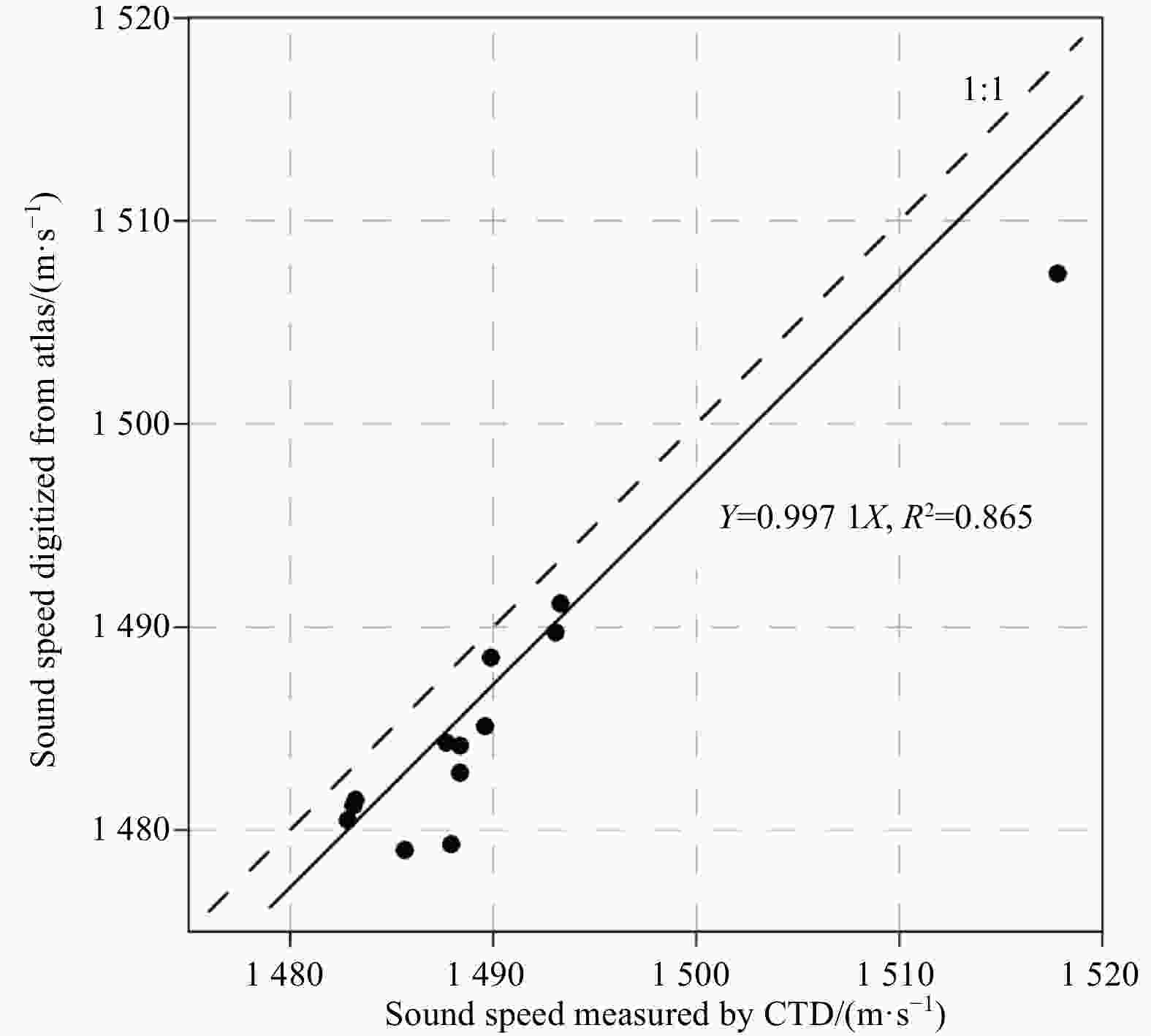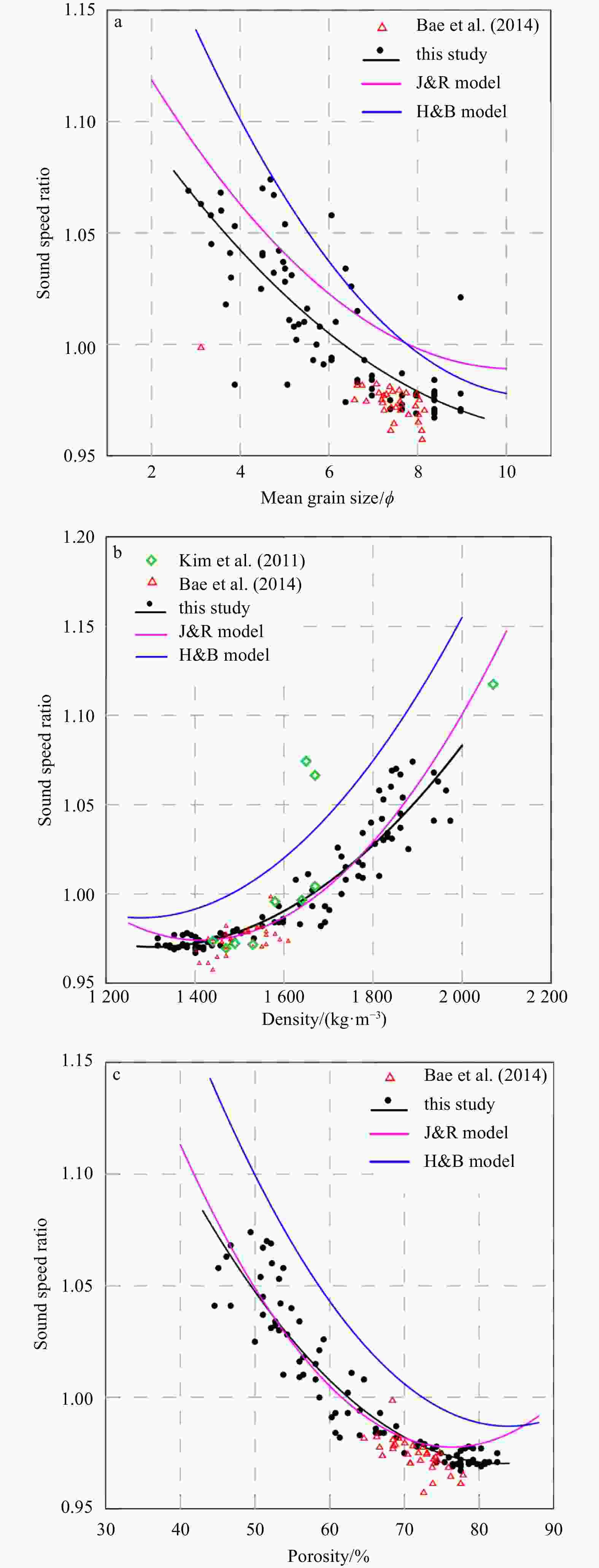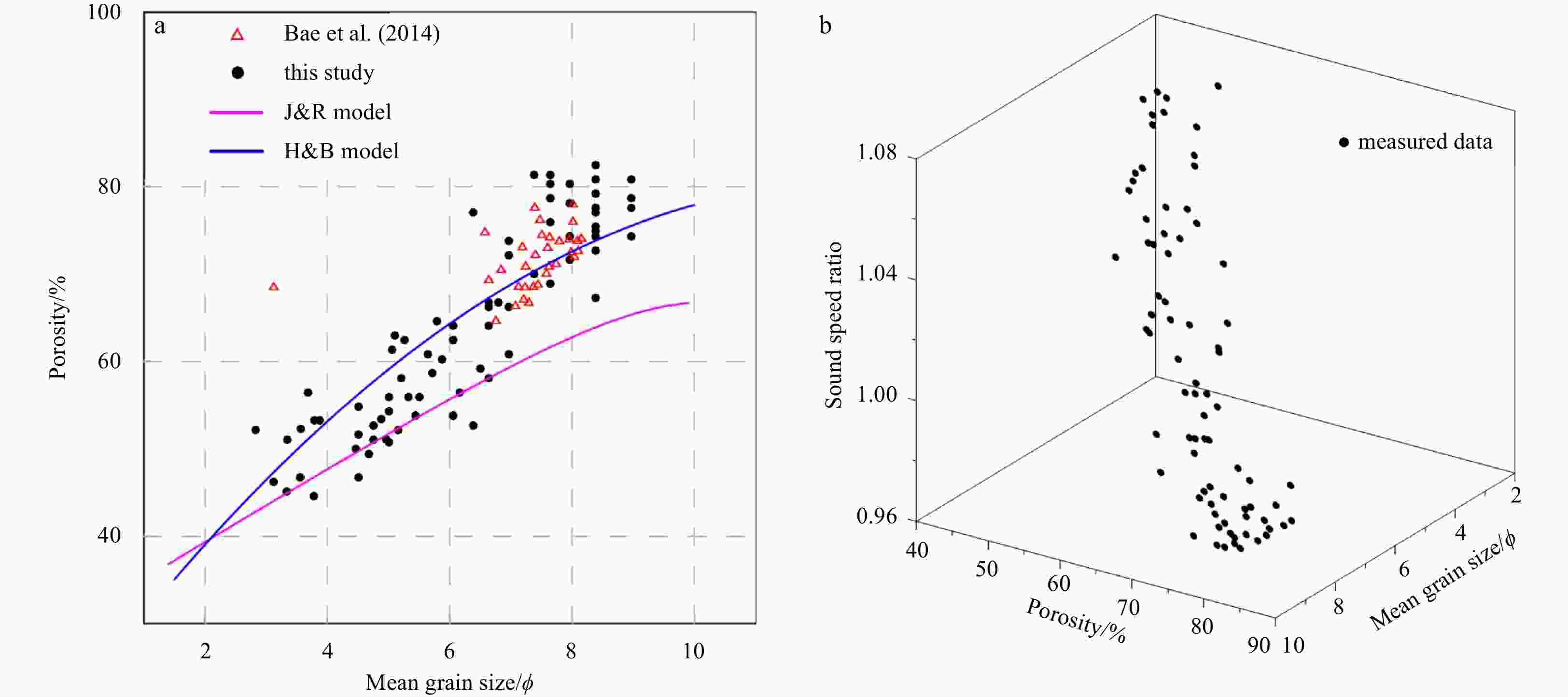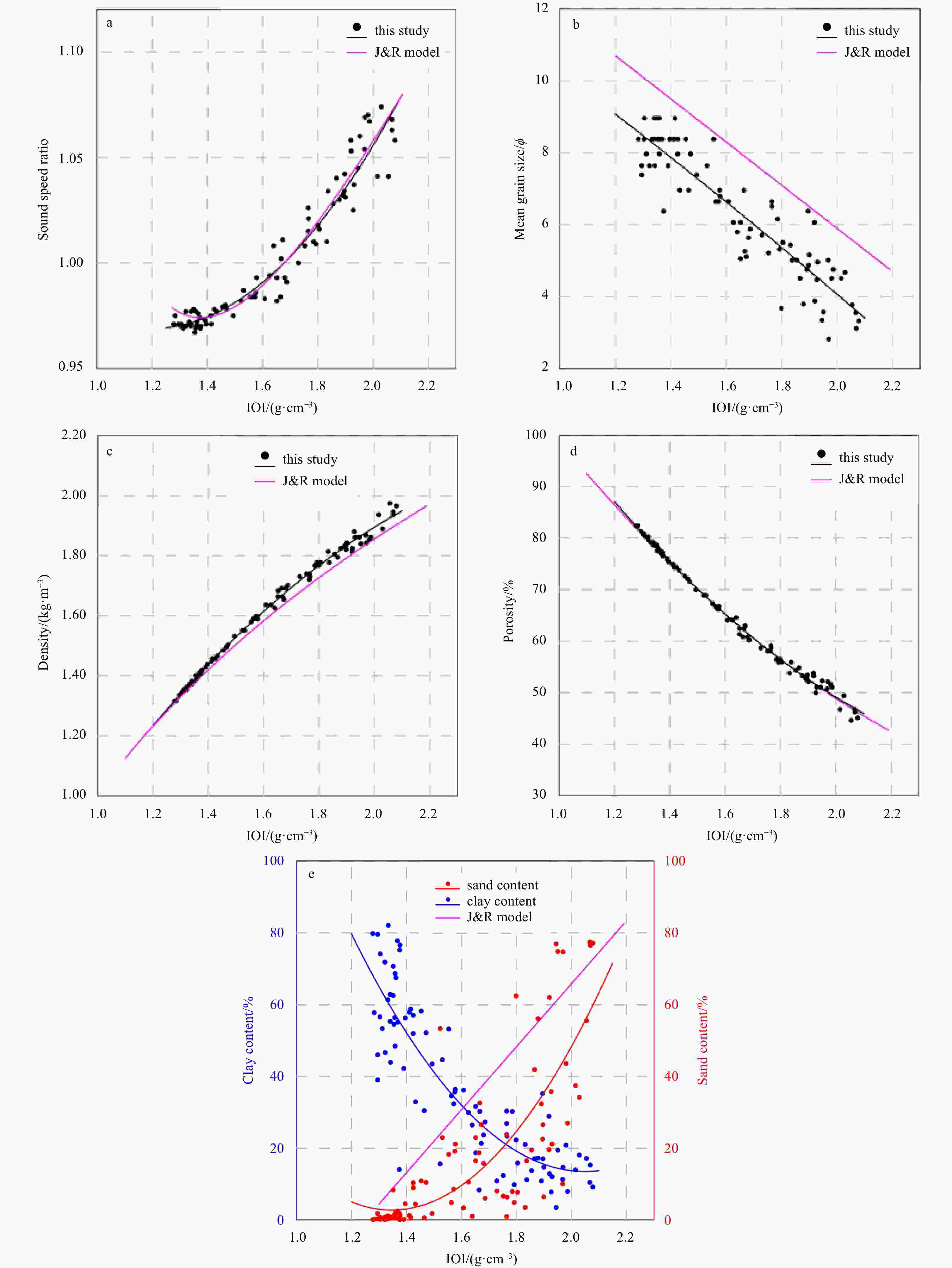Relationships between the sound speed ratio and physical properties of surface sediments in the South Yellow Sea
-
Abstract: Building empirical equations is an effective way to link the acoustic and physical properties of sediments. These equations play an important role in the prediction of sediments sound speeds required in underwater acoustics. Although many empirical equations coupling acoustic and physical properties have been developed over the past few decades, further confirmation of their applicability by obtaining large amounts of data, especially for equations based on in situ acoustic measurement techniques, is required. A sediment acoustic survey in the South Yellow Sea from 2009 to 2010 revealed statistical relationships between the in situ sound speed and sediment physical properties. To improve the comparability of these relationships with existing empirical equations, the present study calculated the ratio of the in situ sediment sound speed to the bottom seawater sound speed, and established the relationships between the sound speed ratio and the mean grain size, density and porosity of the sediment. The sound speed of seawater at in situ measurement stations was calculated using a perennially averaged seawater sound speed map by an interpolation method. Moreover, empirical relations between the index of impedance and the sound speed and the physical properties were established. The results confirmed that the existing empirical equations between the in situ sound speed ratio and the density and porosity have general suitability for application. This study also considered that a multiple-parameter equation coupling the sound speed ratio to both the porosity and the mean grain size may be more useful for predicting the sound speed than an equation coupling the sound speed ratio to the mean grain size.
-
Figure 1. The location of the study area (a, red shaded area), contour map of the bottom seawater temperature (°C) in the study area in June (b, from Editorial Board for Marine Atlas, 1993), and contour map of the bottom seawater sound speed (m/s) in the study area in June (c, from Editorial Board for Marine Atlas, 1993). In a, the black shaded area shows the study area of Kim et al. (2011) and Bae et al. (2014), whose data were used for comparison. BS: Bohai Sea, NYS: North Yellow Sea, SYS: South Yellow Sea, ECS: East China Sea, KWC: Kuroshio Warm Current, YSWC: Yellow Sea Warm Current, YSCC: Yellow Sea Coastal Current, and KCC: Korea Coastal Current.
Figure 3. Shepard ternary diagram of sediment types in the study area. The black points represent the data used in this paper and the red points represent the collected data from Bae et al. (2014).
Figure 4. Relationship between the sound speed ratio and the three physical properties of mean grain size (a), bulk density (b), and porosity (c). Black points represent our data, and black solid lines represent their fitted curves, corresponding to equations listed in Table 1. Also plotted are the curves of the H&B model (blue lines), the J&R model (pink lines) as listed in Appendix, and data from Kim et al. (2011) (green diamonds) and Bae et al. (2014) (red triangles).
Figure 5. Relationship between the porosity and the mean grain size (a), and double-parameters relationship of sound speed ratio with both porosity and mean grain size (b). In a, black points represent our data; also plotted are the H&B model (blue lines), the J&R model (pink lines), and data from Bae et al. (2014) (red triangles).
Figure 6. Relationship between the IOI and the geoacoustical and physical properties and comparison with equations from Jackson and Richardson (2007). a. Sound speed ratio against the IOI, b. mean grain size against the IOI, c. density against the IOI, d. porosity against the IOI, and e. sand content and clay content against the IOI (the pink line represents the regression for IOI against sand and gravel content in J&R model).
Table 1. Empirical relationships of the sediment sound speed ratio with physical properties
Physical properties Regression equation for VpR Correlation coefficient (R2) Mean grain size (Mz)$/\phi$ $V_{p} R\!=\!1.151\;3\!-\!3.292\;3 {\rm{e}}^{-2} M_{z}\!+\!1.421\;3 {\rm{e}}^{-3} M_{z}^{2}$ 0.687 8 Density (ρ)/(kg·m–3) ${V_p}R \!=\! 1.373\;4 \!-\! 5.793\;5{{\rm{e}}^{ - 4} } \rho \!+\! 2.081\;9{{\rm{e}}^{ - 7} } {\rho ^2}$ 0.878 5 Porosity (η)/% $V_{p} R\!=\!1.378\;8\!-\!1.067\;1 {\rm{e} }^{-2} \eta\!+\!6.986\;0 {\rm{e} }^{-5} \eta^{2}$ 0.877 4 Porosity and mean grain size$/\phi$ $V_{p} R\!=\!0.998\;8\!-\!0.005\;2 \eta\!-\!0.025\;0 M_z\!+\!0.009\;5 \eta^{2}\!-\!0.013\;0 \eta M_z\!+\!0.013\;1 M_z^{2}$ 0.876 5 Table 2. Empirical relationships between the index of impedance (IOI) and geoacoustical and physical properties
Parameters Regression equation for the IOI Correlation coefficient (R2) Sound speed ratio (VpR) $\normalsize{V_{p} R\!=\!1.161\;0\!-\!0.321\;4 ({\rm{IOI}})\!+\!0.134\;4 ({\rm{IOI}})^{2}}$ 0.938 3 Mean grain size (Mz)/ϕ $\normalsize{M_{z}\!=\!15.607\;6\!-\!4.957\;3 ({\rm{IOI}})\!-\!0.405\;8 ({\rm{IOI}})^{2}}$ 0.832 1 Bulk density (ρ)/(g·cm–3) $\normalsize{\rho\!=\!-0.508\;4\!+\!1.828\;8 ({\rm{IOI}})\!-\!0.313\;5 ({\rm{IOI}})^{2}}$ 0.995 7 Porosity (η)/% $\normalsize{\eta\!=\!187.42\!-\!105.24 ({\rm{IOI}})\!+\!18.04 ({\rm{IOI}})^{2}}$ 0.995 2 Sand content (SC)/% $\normalsize{{\rm{SC}}\!=\!196.07\!-\!287.15 ({\rm{IOI}})\!+\!106.63 ({\rm{IOI}})^{2}}$ 0.595 5 Clay content (CC)/% $\normalsize{{\rm{CC}}\!=\!399.23\!-\!376.47 ({\rm{IOI}})\!+\!91.86 ({\rm{IOI}})^{2})$ 0.775 9 -
[1] Bachman R T. 1989. Estimating velocity ratio in marine sediment. The Journal of the Acoustical Society of America, 86(5): 2029–2032. doi: 10.1121/1.398585 [2] Bae S H, Kim D C, Lee G S, et al. 2014. Physical and acoustic properties of inner shelf sediments in the South Sea, Korea. Quaternary International, 344: 125–142. doi: 10.1016/j.quaint.2014.03.058 [3] Biot M A. 1956a. Theory of propagation of elastic waves in a fluid-saturated porous solid: I. Low-frequency range. The Journal of the Acoustical Society of America, 28(2): 168–178. doi: 10.1121/1.1908239 [4] Biot M A. 1956b. Theory of propagation of elastic waves in a fluid-saturated porous solid: II. Higher frequency range. The Journal of the Acoustical Society of America, 28(2): 179–191. doi: 10.1121/1.1908241 [5] Buckingham M J. 2000. Wave propagation, stress relaxation, and grain-to-grain shearing in saturated, unconsolidated marine sediments. The Journal of the Acoustical Society of America, 108(6): 2796–2815. doi: 10.1121/1.1322018 [6] Buckingham M J. 2007. On pore-fluid viscosity and the wave properties of saturated granular materials including marine sediments. The Journal of the Acoustical Society of America, 122(3): 1486–1501. doi: 10.1121/1.2759167 [7] Chotiros N P, Isakson M J. 2004. A broadband model of sandy ocean sediments: biot-Stoll with contact squirt flow and shear drag. The Journal of the Acoustical Society of America, 116(4): 2011–2022. doi: 10.1121/1.1791715 [8] Chotiros N P, Isakson M J. 2014. Shear wave attenuation and micro-fluidics in water-saturated sand and glass beads. The Journal of the Acoustical Society of America, 135(6): 3264–3279. doi: 10.1121/1.4874955 [9] Editorial Board for Marine Atlas. 1993. Marine Atlas of Bohai Sea, Huanghai Sea and East China Sea (Hydrology) (in Chinese). Beijing: China Ocean Press [10] Fu S S, Wilkens R H, Frazer L N. 1996. Acoustic lance: new in situ seafloor velocity profiles. The Journal of the Acoustical Society of America, 99(1): 234–242. doi: 10.1121/1.414506 [11] Hamilton E L. 1963. Sediment sound velocity measurements made in situ from Bathyscaph Trieste. Journal of Geophysical Research, 68(21): 5991–5998. doi: 10.1029/JZ068i021p05991 [12] Hamilton E L. 1971. Prediction of in-situ acoustic and elastic properties of marine sediments. Geophysics, 36(2): 266–284. doi: 10.1190/1.1440168 [13] Hamilton E L, Bachman R T. 1982. Sound velocity and related properties of marine sediments. The Journal of the Acoustical Society of America, 72(6): 1891–1904. doi: 10.1121/1.388539 [14] Hamilton E L, Shumway G, Menard H W, et al. 1956. Acoustic and other physical properties of shallow-water sediments off San Diego. The Journal of the Acoustical Society of America, 28(1): 1–15. doi: 10.1121/1.1908210 [15] Jackson D R, Richardson M D. 2007. High-Frequency Seafloor Acoustics. New York: Springer [16] Kamann P J, Ritzi R W, Dominic D F, et al. 2007. Porosity and permeability in sediment mixtures. Groundwater, 45(4): 429–438. doi: 10.1111/j.1745-6584.2007.00313.x [17] Kan Guangming, Liu Baohua, Zhao Yuexia, et al. 2011. Self-contained in situ sediment acoustic measurement system based on hydraulic driving penetration. High Technology Letters, 17(3): 311–316 [18] Kim G Y, Kim D C, Yoo D G, et al. 2011. Physical and geoacoustic properties of surface sediments off eastern Geoje Island, South Sea of Korea. Quaternary International, 230(1–2): 21–33. doi: 10.1016/j.quaint.2009.07.028 [19] Kimura M. 2011. Velocity dispersion and attenuation in granular marine sediments: comparison of measurements with predictions using acoustic models. The Journal of the Acoustical Society of America, 129(6): 3544–3561. doi: 10.1121/1.3585841 [20] Liu Baohua, Han Tongcheng, Kan Guangming, et al. 2013. Correlations between the in situ acoustic properties and geotechnical parameters of sediments in the Yellow Sea, China. Journal of Asian Earth Sciences, 77: 83–90. doi: 10.1016/j.jseaes.2013.07.040 [21] Meng Xiangmei, Liu Baohua, Kan Guangming, et al. 2012. An experimental study on acoustic properties and their influencing factors of marine sediment in the southern Huanghai Sea. Acta Oceanologia Sinica (in Chinese), 34(6): 74–83 [22] Richardson M D. 1997. In-situ, shallow-water sediments geoacoustic properties. In: Zhang R, Zhou J, eds. Shallow-Water Acoustics. Beijing: China Ocean Press, 163–170 [23] Richardson M D, Briggs K B. 1993. On the use of acoustic impedance values to determine sediment properties. In: Pace N G, Langhorne D N, eds. Acoustic Classification and Mapping of the Seabed. Bath: Institute of Acoustics, 15–25 [24] Richardson M D, Briggs K B. 1996. In situ and laboratory geoacoustic measurements in soft mud and hard-packed sand sediments: implications for high-frequency acoustic propagation and scattering. Geo-Marine Letters, 16(3): 196–203. doi: 10.1007/BF01204509 [25] Richardson M D, Briggs K B. 2004. Empirical predictions of seafloor properties based on remotely measured sediment impedance. In: Porter M B, Siderius M, eds. High Frequency Ocean Acoustic Conference. Melville: AIP Press, 12–21 [26] Shi Xuefa. 2012. China Coastal Seas-Marine Sediment (in Chinese). Beijing: China Ocean Press, 27–46 [27] Stoll R D. 1977. Acoustic waves in ocean sediments. Geophysics, 42(4): 715–725. doi: 10.1190/1.1440741 [28] Wang Jingqiang, Li Guanbao, Liu Baohua, et al. 2018. Experimental study of the ballast in situ sediment acoustic measurement system in South China Sea. Marine Georesources & Geotechnology, 36(5): 515–521 [29] Williams K L. 2001. An effective density fluid model for acoustic propagation in sediments derived from Biot theory. The Journal of the Acoustical Society of America, 110(5): 2276–2281. doi: 10.1121/1.1412449 [30] Yang Jie, Tang Dajun. 2017. Direct measurements of sediment sound speed and attenuation in the frequency band of 2–8 kHz at the target and reverberation experiment site. IEEE Journal of Oceanic Engineering, 42(4): 1102–1109. doi: 10.1109/JOE.2017.2714722 [31] Zhou Jixun, Zhang Xuezhen, Knobles D P. 2009. Low-frequency geoacoustic model for the effective properties of sandy seabottoms. The Journal of the Acoustical Society of America, 125(5): 2847–2866. doi: 10.1121/1.3089218 -




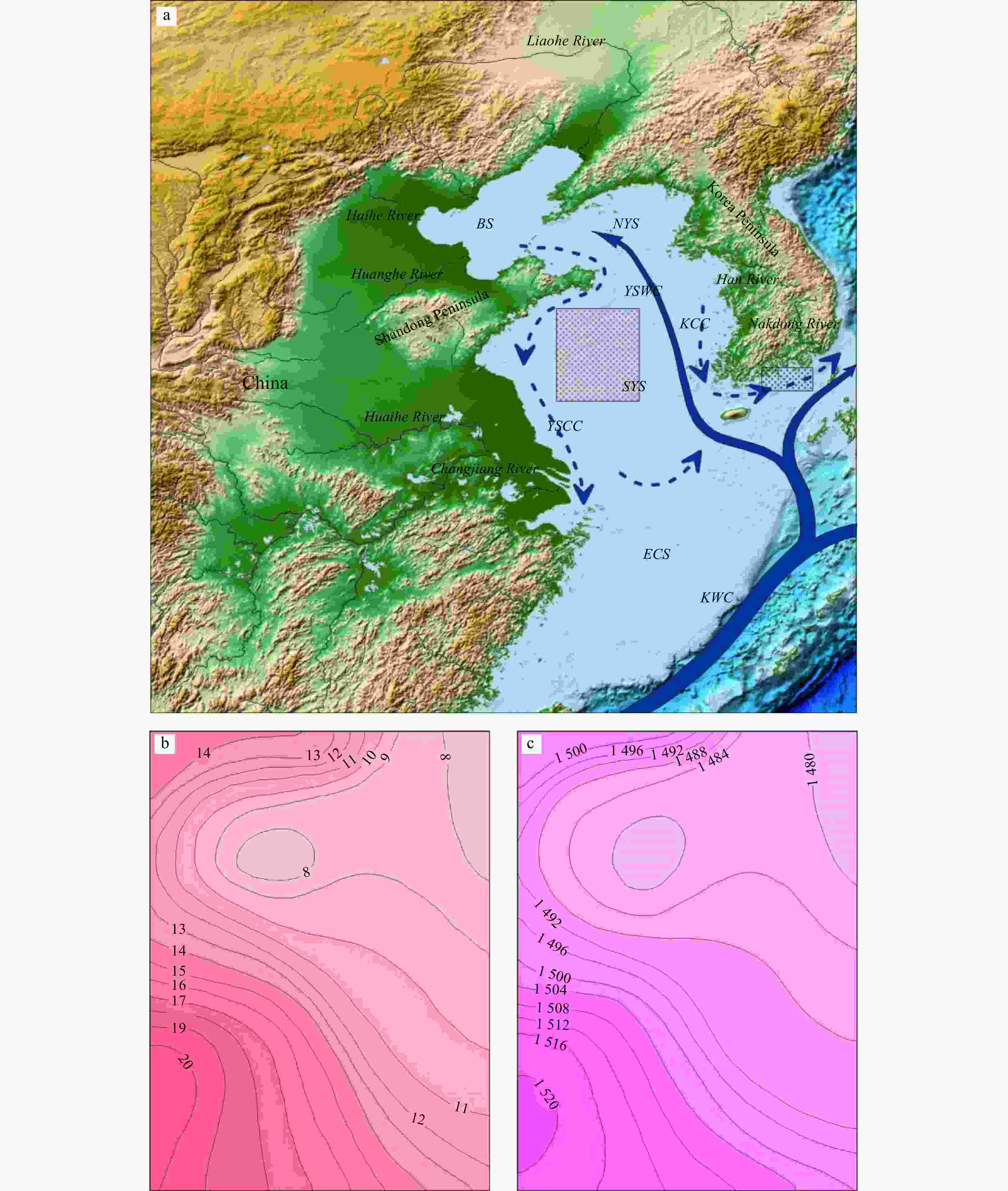
 下载:
下载:
